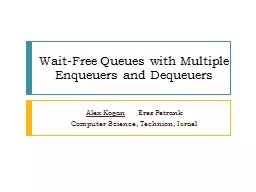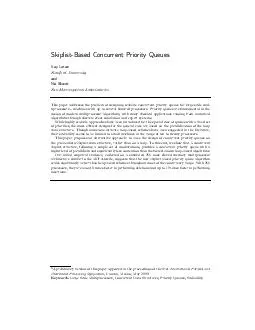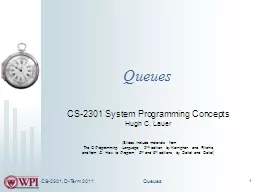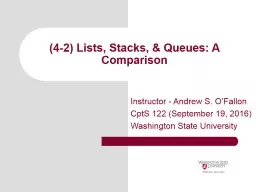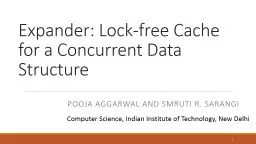PPT-Wait-Free Queues with Multiple
Author : mitsue-stanley | Published Date : 2015-09-29
Enqueuers and Dequeuers Alex Kogan Erez Petrank Computer Science Technion Israel Outline Queue data structure Progress guarantees Previous work on concurrent
Presentation Embed Code
Download Presentation
Download Presentation The PPT/PDF document "Wait-Free Queues with Multiple" is the property of its rightful owner. Permission is granted to download and print the materials on this website for personal, non-commercial use only, and to display it on your personal computer provided you do not modify the materials and that you retain all copyright notices contained in the materials. By downloading content from our website, you accept the terms of this agreement.
Wait-Free Queues with Multiple: Transcript
Download Rules Of Document
"Wait-Free Queues with Multiple"The content belongs to its owner. You may download and print it for personal use, without modification, and keep all copyright notices. By downloading, you agree to these terms.
Related Documents

